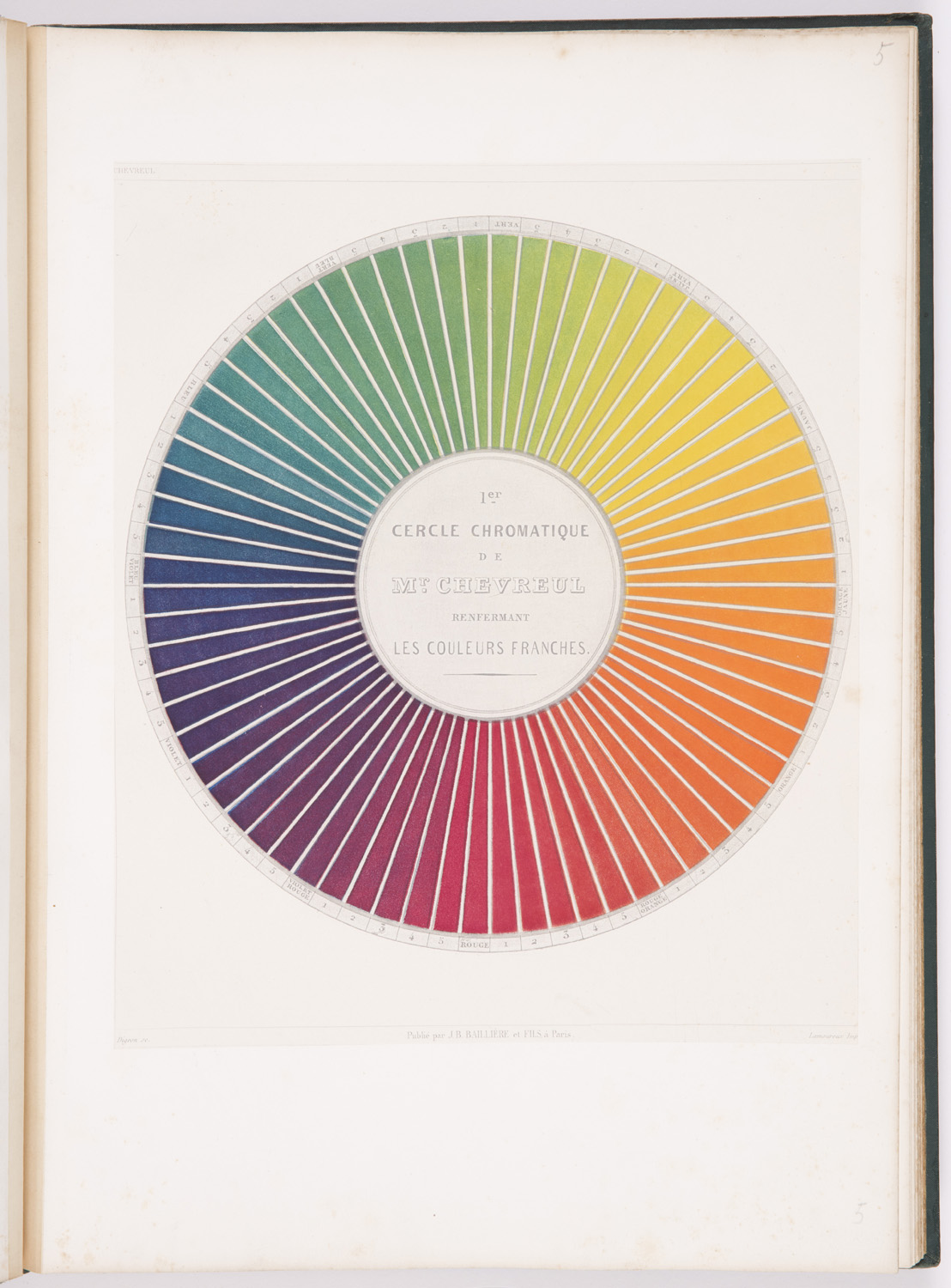To celebrate the opening of Saturated: The Allure and Science of Color (May 11, 2018-January 13, 2019), Object of the Day this month will feature colorful objects from the exhibition.
Following his groundbreaking 1839 treatise on simultaneous contrast, Michel Eugène Chevreul spent 25 years designing one of the first color systems to include brightness and chroma, or saturation. This plate shows 72 hues at maximum chroma; nine color wheels shading progressively toward black follow it. The book also includes 20-step scales showing shades and tints, the progression toward white.
Chevreul’s system of color analysis was developed for the use of painters, textile designers, decorators, and gardeners. In this treatise, he returns to the domain of science and pure technique, presenting the results of 25 years of research and experimentation. Building on his earlier work, he establishes a precise nomenclature of colors, applying specific technical meanings to the terms ton gamme (color scale) and nuance, and sets forth a highly detailed classification scheme of colors. His series of ten chromatic circles, diagramming the variations in color obtained by the progressive addition of black to the basic colors of red, yellow and blue, show nearly 15,000 different shades of color.
The color wheels in this edition were produced through a new method of color printing using steel engraving, invented by Rene Henri Digeon. Digeon’s 4-color aquatint printing process (using separate plates for yellow, blue, red, and black), includes notes on the composition of the pigments.
A fully digitized version of the De Couleurs is available here in Smithsonian Libraries online collection.
This object is currently on view in Saturated: The Allure and Science of Color.
Jennifer Cohlman Bracchi is a Librarian for Smithsonian Libraries at Cooper Hewitt, Smithsonian Design Museum.
